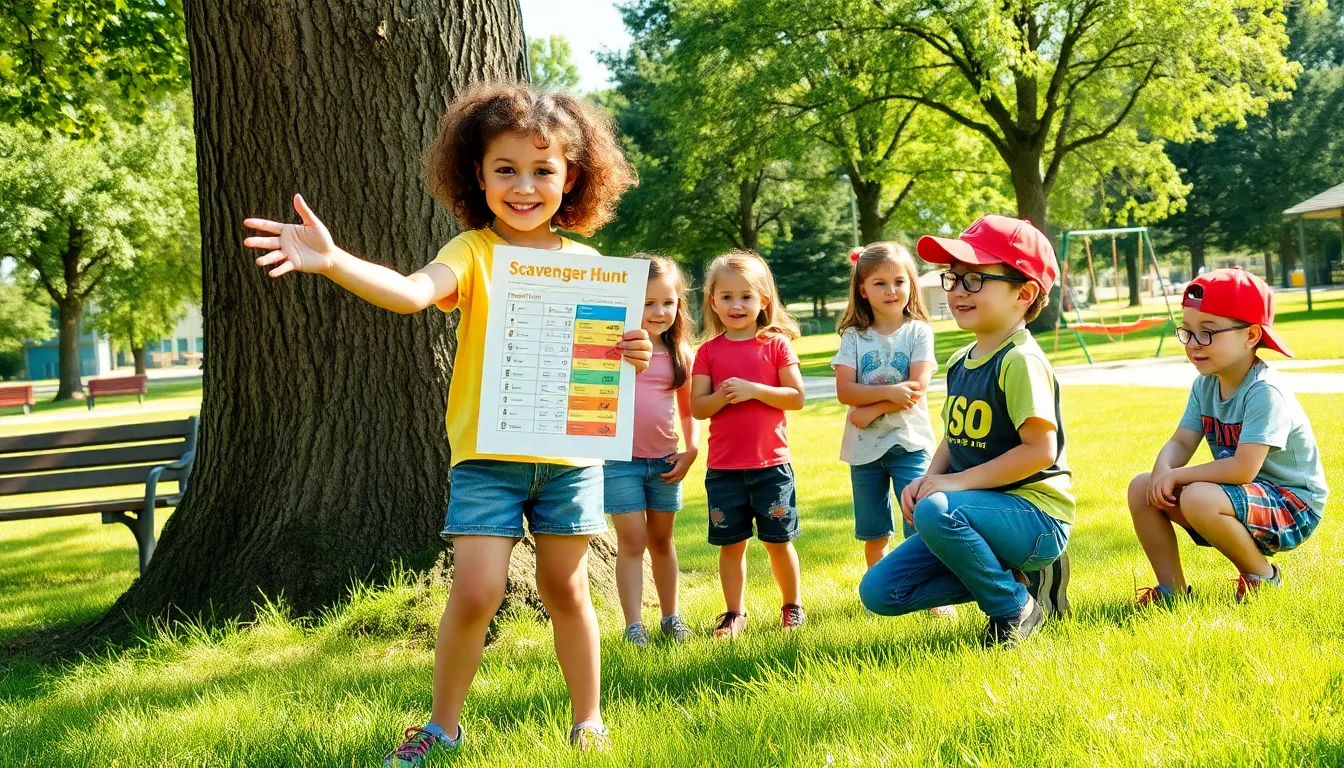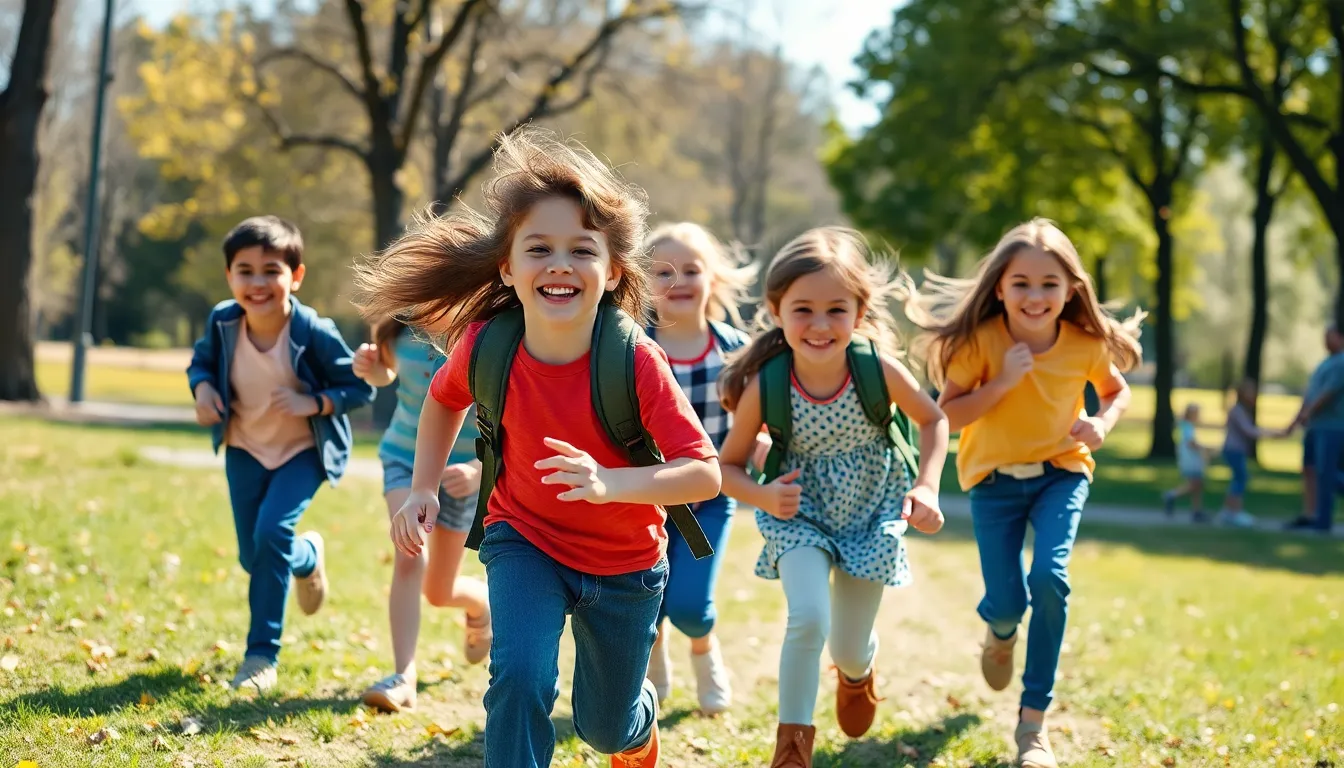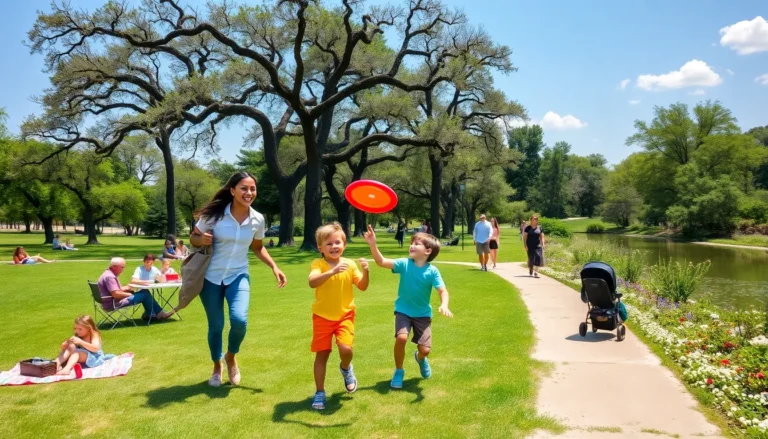Imagine a world where kids transform into treasure-hunting adventurers, armed with nothing but a list of quirky items and a boundless imagination. Scavenger hunts for kids aren’t just a fun way to pass the time; they’re epic quests that spark creativity and teamwork. With each clue, little explorers dive into a realm of excitement, discovering hidden gems in their own backyard or local park.
Table of Contents
ToggleWhat Is a Scavenger Hunt for Kids?
A scavenger hunt for kids is a fun, interactive game that encourages exploration and creativity. Participants receive a list of specific items or clues to find within a designated area. Challenges often involve searching local parks, backyards, or any familiar surroundings.
Activities engage children in teamwork and problem-solving as they work together to locate the listed items. Scavenger hunts can vary in complexity, catering to different age groups by adjusting the difficulty of the clues. Younger children might search for common objects like a leaf or a flower, while older ones might tackle more intricate riddles or themed quests.
Many scavenger hunts include a competitive element, where teams race against each other to find items first. This aspect promotes friendly rivalry and enhances social interaction among participants. Adults can easily organize these events, making them suitable for birthday parties, family gatherings, or community events.
Creativity plays a key role in scavenger hunts, as children often develop unique strategies for finding the items. Some hunts might even involve creating their own lists, allowing for personalization and additional engagement. Incorporating educational aspects, scavenger hunts can also reinforce skills in observation, critical thinking, and teamwork.
Overall, a scavenger hunt provides entertainment while facilitating physical activity and cognitive development. The joy of discovery, coupled with healthy competition, makes this activity a favorite among kids.
Benefits of Scavenger Hunts for Kids
Scavenger hunts offer numerous advantages for children’s growth and development. These benefits span across physical activity, cognitive development, and social skills enhancement.
Physical Activity
Engaging in a scavenger hunt promotes physical activity among kids. Running, walking, and jumping help them expend energy while having fun. They explore various environments, such as parks or backyards, which encourages movement. Active participation improves their motor skills and coordination. Fresh air provides additional health benefits, boosting their mood and energy levels. These adventures make traditional exercise feel like play, increasing the likelihood of developing a lifelong active lifestyle.
Cognitive Development
Scavenger hunts enhance cognitive development through problem-solving and critical thinking. Children analyze clues and strategize to find items, sharpening their reasoning skills. They practice observation by searching for specific details in their environment. Additionally, scavenger hunts can be tailored to include educational elements, such as math or language-based challenges. This approach encourages learning while promoting engagement. Through these activities, kids gain confidence in their ability to tackle challenges, reinforcing a love for learning.
Social Skills Enhancement
Social interaction flourishes during scavenger hunts. Collaborating with peers fosters teamwork and communication. Children learn to share ideas, negotiate strategies, and celebrate successes together. Friendly competition often arises, promoting empathy and sportsmanship. These shared experiences help build lasting friendships and improve their ability to work with others. Children develop important interpersonal skills that extend beyond the hunt, benefiting their overall social aptitude.
How to Plan a Scavenger Hunt for Kids
Planning a scavenger hunt for kids involves several key steps to ensure a memorable experience. Focus on organizing each aspect carefully.
Choosing a Theme
Selecting a theme helps create excitement for the scavenger hunt. Popular themes include nature, pirates, animals, or holidays, which inspire creativity and engagement. Themes guide the type of items participants will search for. Incorporating storytelling elements enhances the overall experience. For instance, a pirate theme could introduce imaginative characters, fostering adventurous thinking among kids. Ensure the theme matches the children’s interests, as this will motivate them to participate enthusiastically.
Setting Up Locations
Effective location selection shapes the scavenger hunt’s dynamics. Designate safe, familiar areas such as backyards or local parks for exploration. Diverse settings add to the excitement; incorporate spots like playgrounds, gardens, or sports fields. Maintain a clear boundary to prevent children from venturing too far. Each location should have various hiding spots for the items, stimulating curiosity and discovery. Make sure to choose areas that align with the theme, as this creates a cohesive and engaging environment.
Creating a List of Items
Developing a clear, themed list of items ensures a focused scavenger hunt. Include items that align with the chosen theme, such as leaves, rocks, or toy animals. Rely on age-appropriate lists that challenge younger children to find common objects while providing older kids with riddles or clues that promote critical thinking. Offering a mix of easy and challenging items keeps all participants engaged. Include a few unusual or unique items to heighten excitement. Engage the kids by letting them suggest items for the list, fostering ownership and creativity in the hunt.
Tips for a Successful Scavenger Hunt
Creating a successful scavenger hunt involves careful planning and attention to detail. Consider these key strategies for enhancing the experience.
Engaging Participants
Engagement starts with creating age-appropriate lists that spark curiosity. Involve children in the planning process by letting them suggest items to find. Incorporating themes, like nature or pirates, increases excitement and interest. Additionally, using storytelling can elevate the experience, making it more immersive. Encourage teamwork by forming small groups, promoting collaboration in solving clues. Rewards or small prizes for all participants add to the fun and motivate children to fully immerse themselves.
Safety Considerations
Safety should always be a priority during scavenger hunts. Choosing familiar and secure locations helps minimize risks. Setting boundaries within the area ensures children stay within safe zones. Assigning adult supervisors to oversee participants guarantees a watchful eye during exploration. Discussing rules beforehand, like no running or climbing, reinforces safety practices. Having a first-aid kit readily available addresses any minor accidents quickly. All these measures contribute to a more enjoyable and secure scavenger hunt experience for everyone involved.
Conclusion
Scavenger hunts offer an engaging way for kids to explore their surroundings while developing essential skills. They encourage creativity teamwork and problem-solving in a fun and interactive manner. By incorporating themes and allowing children to contribute to the planning process adults can create memorable experiences that resonate with young explorers.
These activities not only entertain but also promote physical activity and cognitive growth. Whether it’s a birthday party or a community event scavenger hunts provide an opportunity for children to bond and learn in a playful environment. With careful planning and consideration of safety it’s easy to organize a successful scavenger hunt that kids will cherish for years to come.









